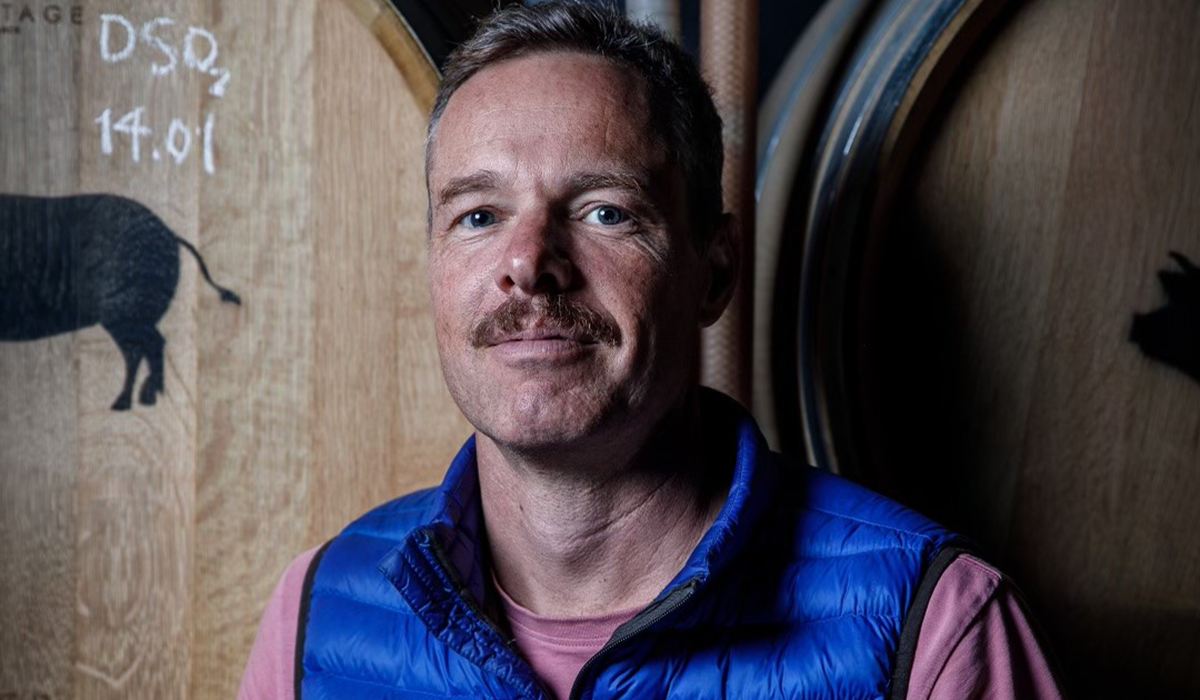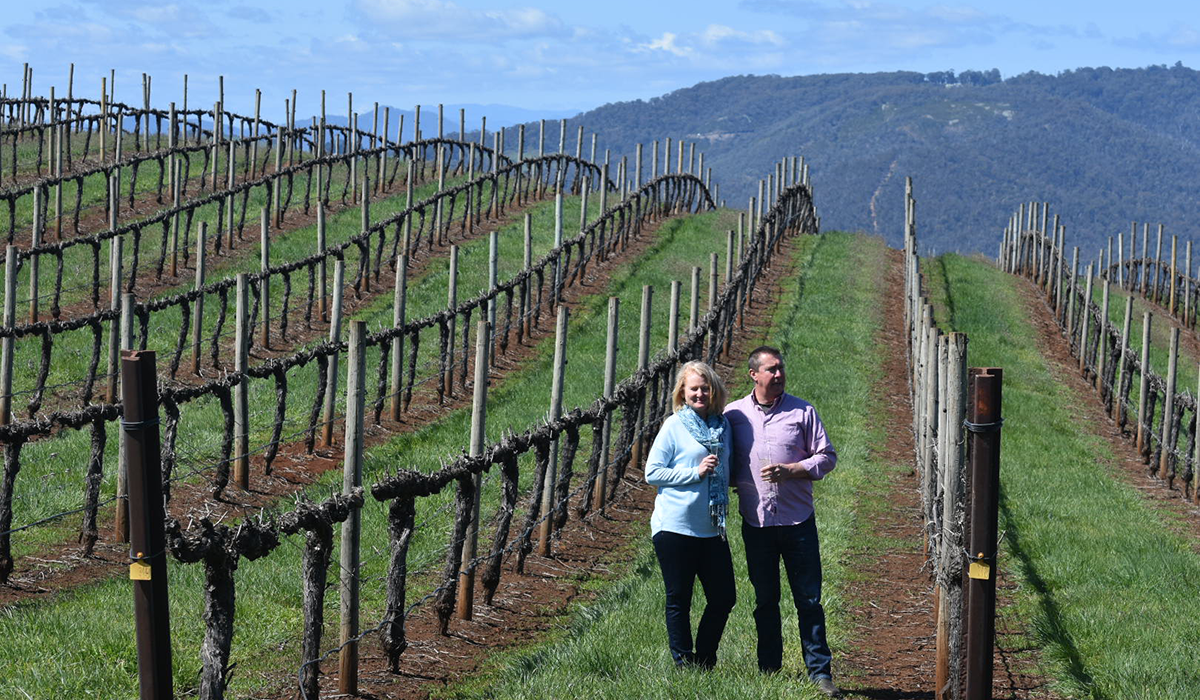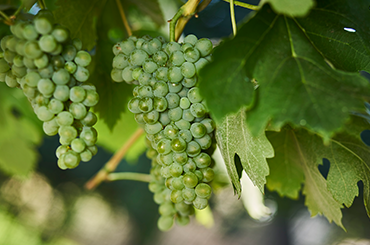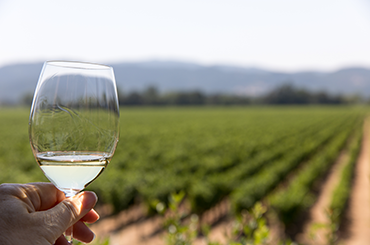Warm climate or cool, skin contact or lees ageing – fiano can be made in many ways. This Italian-native is one of the country's most up-and-coming alternative varieties, thanks to its texture and propensity for food-pairing. Now grown in many Australian regions, fiano has quite the fan base. Four local producers tell us why they love this Mediterranean white and how they like to make theirs.

Simon Robertson – Tumblong Hills, Gundagai NSW
H. How would you describe this variety to someone who’s never tried it before?
W. Fiano is quite unique. Its reminds me a little of chenin blanc with its texture – I would say it sits in the middle of chardonnay and sauvignon blanc. Its a very grower-friendly variety that seems to be well suited to the Gundagai climate, displaying a nice balance of fruit ripeness and alcohol in the glass. I first came across fiano with a friend in Melbourne about 10 years ago. I remember really liking the structure of the wine, so I checked out its heritage and thought it would be suited to growing here.
H. How do you approach the winemaking process?
W. Our fiano fruit is hand-picked, whole-bunch pressed and settled for 24 hours free run before it goes to stainless fermenters, pressing and oak barrels for fermentation. In terms of winemaking techniques, there's nothing we do that's out of the ordinary. The vineyard delivers a quality of fruit that makes the whole process very easy and delivers an attractive wine that has become very popular with our customers.
Find out more.

James Manners – First Ridge, Mudgee NSW
H. How would you describe this variety to someone who’s never tried it before?
J. Versatile. Depending on how it is made the variety can make delicious crisp, exotically aromatic wines as well as a fuller-bodied dry white with great texture and some added complexity from barrel fermentation/maturation. For me, it’s fiano’s texture coupled with interesting aromatics that make it a standout. Even when picked riper it retains a crisp acid profile and doesn’t become broad or flabby.
H. How do you approach the winemaking process?
J. The vineyard site at First Ridge has some amazing geology and aspect and our winemaking is a constant evolution and reaction to each season. One parcel of fiano is fermented cool with a selected aromatic yeast strain and treated like a riesling, while a second component is fermented wild with a higher solids percentage in older French oak barrels. The wine is kept on its lees during the maturation, but not stirred. The two batches are then blended together producing an aromatic wine with texture.
Find out more.

Alex Beckett – Briar Ridge, Hunter Valley NSW
H. How would you describe this variety to someone who’s never tried it before?
A. Fiano is a medium-bodied textural white variety hailing from central Italy which carries wonderful natural balance of structure and refreshing acidity. Unique in its dark floral honey tones and waxy smooth texture, Australian fiano tends to have a brighter, more refreshing acidity than the Italian examples – but both show a lovely saline finish. It grows incredibly well in all manner of climates, but particularly well in our warm Hunter Valley region. It’s a perfect evening drink with its abundant texture and bright acidity.
H. What is unique about your product and how it is made?
A. Our fiano is unique as it comes from one of the Hunter Valley’s cooler sites, sitting 175 metres above sea level. My winemaking process is about only working with the wine at key points – light skin contact before fermentation followed by a lengthy maturation on lees in old oak for a rich savoury and textural style. Over time, the change has been to make less overt wines and more subtle, savoury styles that are best enjoyed on a cool evening in large, wide glassware to allow the aromas to build in the glass.
Find out more.

Michael Murtagh – Redbank Wines, King Valley VIC
H. How would you describe this variety to someone who’s never tried it before?
M. Fiano can vary in style depending on the maker and the region. We source our grapes from one of the highest vineyards in Australia on the cold mountain tops of the Victorian Alps. We get clean, mineral and lemon zest flavoured wines that are perfect for that hot afternoon or great with dinner and rich fish dishes. Its citrus acidity gives it generous proportion so while lean and tight, it does not come across as bitter and too acidic.
H. How do you approach the winemaking process?
M. Because our site is at 650 metres above sea level we need to get the fruit quite ripe in order to let the natural acidity drop off. We harvest cold and press as soon as possible. We handle oxidatively with no preservatives prior to fermentation and no acid additions are required. We then ferment very clean and cold. Bottle fresh. No oak. We love this wine as an aperitif prior to lunch on a hot summer day, and its great with charcuterie as the natural acid keeps the palate fresh and ready for the main course.
Find out more.
This article was produced in partnership with the featured wineries.
Top image credit: Wine Australia

Simon Robertson – Tumblong Hills, Gundagai NSW
H. How would you describe this variety to someone who’s never tried it before?
W. Fiano is quite unique. Its reminds me a little of chenin blanc with its texture – I would say it sits in the middle of chardonnay and sauvignon blanc. Its a very grower-friendly variety that seems to be well suited to the Gundagai climate, displaying a nice balance of fruit ripeness and alcohol in the glass. I first came across fiano with a friend in Melbourne about 10 years ago. I remember really liking the structure of the wine, so I checked out its heritage and thought it would be suited to growing here.
H. How do you approach the winemaking process?
W. Our fiano fruit is hand-picked, whole-bunch pressed and settled for 24 hours free run before it goes to stainless fermenters, pressing and oak barrels for fermentation. In terms of winemaking techniques, there's nothing we do that's out of the ordinary. The vineyard delivers a quality of fruit that makes the whole process very easy and delivers an attractive wine that has become very popular with our customers.
Find out more.

James Manners – First Ridge, Mudgee NSW
H. How would you describe this variety to someone who’s never tried it before?
J. Versatile. Depending on how it is made the variety can make delicious crisp, exotically aromatic wines as well as a fuller-bodied dry white with great texture and some added complexity from barrel fermentation/maturation. For me, it’s fiano’s texture coupled with interesting aromatics that make it a standout. Even when picked riper it retains a crisp acid profile and doesn’t become broad or flabby.
H. How do you approach the winemaking process?
J. The vineyard site at First Ridge has some amazing geology and aspect and our winemaking is a constant evolution and reaction to each season. One parcel of fiano is fermented cool with a selected aromatic yeast strain and treated like a riesling, while a second component is fermented wild with a higher solids percentage in older French oak barrels. The wine is kept on its lees during the maturation, but not stirred. The two batches are then blended together producing an aromatic wine with texture.
Find out more.

Alex Beckett – Briar Ridge, Hunter Valley NSW
H. How would you describe this variety to someone who’s never tried it before?
A. Fiano is a medium-bodied textural white variety hailing from central Italy which carries wonderful natural balance of structure and refreshing acidity. Unique in its dark floral honey tones and waxy smooth texture, Australian fiano tends to have a brighter, more refreshing acidity than the Italian examples – but both show a lovely saline finish. It grows incredibly well in all manner of climates, but particularly well in our warm Hunter Valley region. It’s a perfect evening drink with its abundant texture and bright acidity.
H. What is unique about your product and how it is made?
A. Our fiano is unique as it comes from one of the Hunter Valley’s cooler sites, sitting 175 metres above sea level. My winemaking process is about only working with the wine at key points – light skin contact before fermentation followed by a lengthy maturation on lees in old oak for a rich savoury and textural style. Over time, the change has been to make less overt wines and more subtle, savoury styles that are best enjoyed on a cool evening in large, wide glassware to allow the aromas to build in the glass.
Find out more.

Michael Murtagh – Redbank Wines, King Valley VIC
H. How would you describe this variety to someone who’s never tried it before?
M. Fiano can vary in style depending on the maker and the region. We source our grapes from one of the highest vineyards in Australia on the cold mountain tops of the Victorian Alps. We get clean, mineral and lemon zest flavoured wines that are perfect for that hot afternoon or great with dinner and rich fish dishes. Its citrus acidity gives it generous proportion so while lean and tight, it does not come across as bitter and too acidic.
H. How do you approach the winemaking process?
M. Because our site is at 650 metres above sea level we need to get the fruit quite ripe in order to let the natural acidity drop off. We harvest cold and press as soon as possible. We handle oxidatively with no preservatives prior to fermentation and no acid additions are required. We then ferment very clean and cold. Bottle fresh. No oak. We love this wine as an aperitif prior to lunch on a hot summer day, and its great with charcuterie as the natural acid keeps the palate fresh and ready for the main course.
Find out more.
This article was produced in partnership with the featured wineries.
Top image credit: Wine Australia






